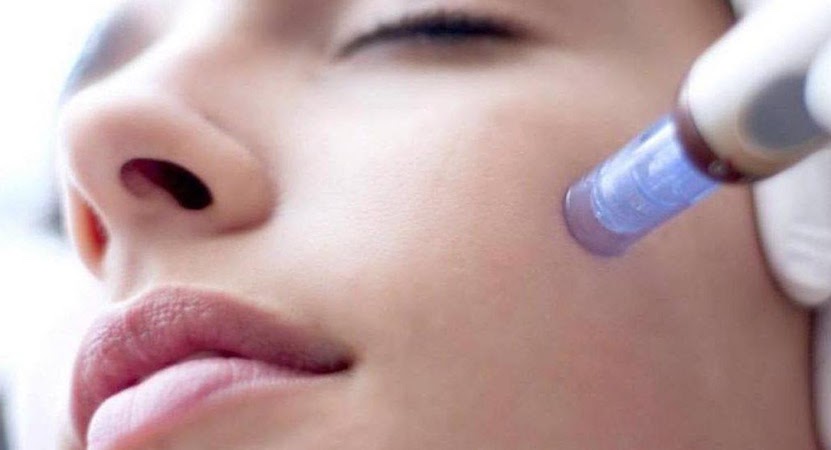What if we told you that pricking hundreds of tiny needles into your face could solve almost all of your existing skin insecurities? A few minutes of pain for a lifetime of pleasure?Allow us to introduce you to the world of microneedling and all of the possibilities it holds.
In this article we discuss the following:
- What is Microneedling?
- Does Microneedling Work?
- Microneedling vs Microdermabrasion
- Microneedling Before and After (with Photos)
- Is Microneedling Safe?
- Microneedling Cost
- Does Microneedling Hurt?
- Different Types of Microneedling
- Microneedling Aftercare: What to Put on Skin After Microneedling?
- Microneedling at Home
- Microneedling Near Me
- Microneedling Side Effects
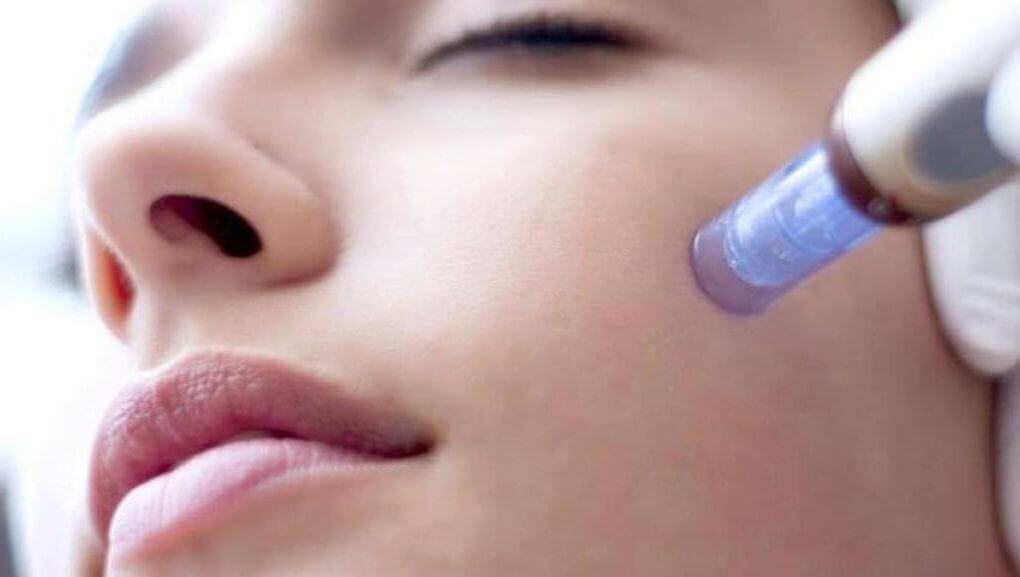
What is Microneedling?
Microneedling sounds a lot worse in description than it actually is in practice. In short, the art of microneedling is quite simple: it involves pricking the skin with very small needles, repeatedly.
By creating hundreds of tiny holes in the skin, the body automatically goes into collagen production mode. The skin perceives these holes as wounds, and works to heal them in the best way it knows how: collagen and brand new tissue.
But are we actually just creating hundreds of harmful wounds on our faces? The answer is no, not exactly. While the body might identify the mass of holes as it would any other wound, the holes themselves are not wide or deep enough to actually cause any damage.
On the contrary, the holes create an opportunity for new, rejuvenated skin to grow, in turn healing imperfections such as scars, large pores and even wrinkles.
Microneedling is considered a cosmetic procedure, and is generally performed by a qualified esthetician. Dermatologists don’t typically perform microneedling, and are likely to recommend a patient seek out the procedure as additional treatment.
Some microneedling can be done at home, by one’s self. We’ll explore this in more detail a little later, so read on if DIY needling sounds right up your alley.
Does Microneedling Work?
It actually does! The trick to microneedling successfully is to respect the stipulated depths that are associated with each aesthetic imperfection.
This procedure is not performed using one standard needle across the board; there are 6 needle lengths to choose from, all with individual capabilities.
The width of the needles remains standard, but the microneedles themselves get longer and longer, ranging from: 0.25mm, 0.5mm, 1mm, 1.5mm, 2mm, 2.5mm.
There are three identifiable layers to the human skin. The outer layer that meets the world is called the stratum corneum. It is relatively thin and easy to penetrate. Underneath it, we find the epidermis. This is an important and dense layer of skin that is responsible for pigmentation and protection of our immune systems.
Underneath the epidermis is the dermis. This is another dense layer of skin where we find our nerve endings, oil glands, sweat glands and hair follicles.
Different imperfections lie within the different layers of the skin. Scarring, for example, lies in the deep dermis. This layer is only reachable via the longest microneedle available: the 2.5mm.
To treat something less severe, such as pigmentation, one only needs to reach the center layer of the skin, so a microneedle 1mm in length is sufficient.
Microneedling Benefits
The biggest benefit of microneedling is that it essentially speeds up the healing process in ways that non-invasive treatments simply can’t. Today, the market is saturated by products that claim to repair cells, or fade scars and pigmentation, but one is unlikely to see significant results until after years of use.
Microneedling is a quick and direct way to target one’s identified imperfections and achieve visible, lasting results in just a matter of weeks.
Perhaps the biggest surprise of them all is that microneedling is actually a beneficial treatment for human skin, regardless of whether there are blemishes that need healing or not. Collagen production is one of the most important bodily functions for a healthy, happy being.
We produce collagen all the time; it’s why our hair can grow, our wounds can heal and our muscles can recover after an intense workout. We don’t all produce the same amount of collagen as the one another; some bodies are naturally better at it than others. Collagen supplements are a growing fad amongst health-conscious communities who want to optimize their intake of this nutritious compound.
By stimulating the body to produce more collagen naturally, we promote healthier tissue, and become less susceptible to skin lesions such as rashes, infections, and cancers.
Microneedling for Hair Loss

It was only in the last few years when researchers began exploring microneedling as a potential treatment against androgenic alopecia and alopecia areata. Hair loss is a phenomenon that plagues both men and women, and it doesn’t seem to discriminate when it comes to age, race or wealth status.
As we mentioned above, collagen is the nutrient responsible for promoting healthy growing hair and nails. Someone who is deficient in internal collagen is likely to experience rapid hair fall and slow growth.
When used on the scalp, it is believed that the micro needles help to induce stem cells within each of the hair follicles, and that this in turn has the ability to promote noticeable growth and less fragility.
Not all cases of hair loss will see improvement simply by making tiny holes in the scalp. Some are more severe and need the addition of stimulant tonics that deliver medication into the body’s growth system, which in turn produces lasting results.
During microneedling for hair loss, a practitioner might apply Rogaine, topical steroids, or platelet rich plasma over the needled area and wait for the product to be absorbed.
Because of the very thin, sensitive nature of scalp skin, your microneedling specialist is likely to apply an anesthetic numbing cream to the area about 45 minutes prior to the start of the needling. In total, microneedling of the scalp shouldn’t take longer than 10 minutes to complete.
Microneedling for Stretch Marks
Microneedling was first founded in the 90s as a treatment for scarring in the deep dermis. As things progressed, practitioners found that reaching more shallow depths brought about healing in different ailments.
We tend to refer to microneedling in conjunction with the face as though this is the only part of the body where one can apply this treatment. This is not true, and microneedling can actually be performed on any part of the body’s skin.
Stretch marks are a type of scarring, and they sit in the deep dermis as well. They are more common in women than in men, and one is likely to find them visible anywhere extensive stretching has taken place, usually due to rapid weight loss or gain. The thighs, buttocks and breasts are common areas for stretch marks, but some people might experience them on the stomach and even calves.
Stretch marks are a result of failed elasticity in the skin, so targeting them with microneedling makes way for brand new, more elastic fibers to enter into the dermis and repair the damage that was done.
Stretch marks require the longest microneedle possible in order to reach the affected area. It is recommended that one use no shorter than 2.5mm needles.
Microneedling on Acne Scars
Scarring was the original intention behind the invention of the microneedling system, and this original inspiration included acne scarring.
These are common marks found on facial skin, especially in people who experienced harsh acne as a teenager and never properly healed from it. Some adults develop acne later in life, and, due to already depleted collagen levels in the body, are left with scarring that can take years to fade out.
It is important to identify what kind of acne scarring you are dealing with before self-prescribing a microneedling treatment. Microneedling only works on depressed scars (those that go down into the skin like craters). Raised scarring from acne is actually a sign of excess collagen in the area; the scars will likely heal themselves and won’t require external treatment.
Generally speaking, microneedling can offer visible results on any acne scarring that is younger than 10 years of age. Anything older than 10 years becomes a lot more difficult to treat, as there is a certain permanence in whatever lives at this depth in the skin.
It is crucial that one does not seek a microneedling treatment for acne scars whilst there is active acne elsewhere on the face. As the needles are rolled, they will open up the active acne, and transport the bacteria across the rest of the face, embedding them deep into the respective new holes. Within a few hours you will have relentless acne all over, even in places you may have never experienced before. As a result, active acne and microneedling cannot exist alongside one another.
Microneedling vs Microdermabrasion
Microneedling and microdermabrasion are forms of micro-treatments. These are treatments within the beauty and aesthetics industries that are considered relatively low in risk, but high in reward.
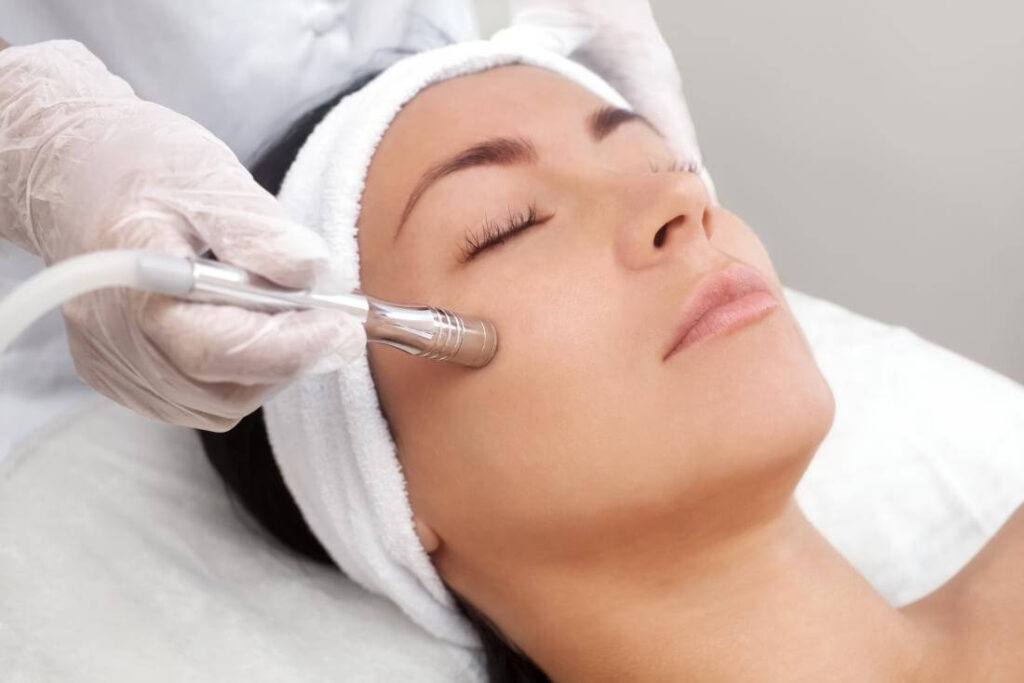
As we know, microneedling is the somewhat invasive procedure of puncturing the skin with hundreds of holes using sterile needles. Microdermabrasion is the less invasive sibling to microneedling; it’s simply a physical exfoliating treatment.
Think of microdermabrasion as the most effective exfoliator available. A device with a rough surface is brushed up against the skin at a very high pulse, removing excess buildup of keratin and dead skin cells.
One tends to see immediate results following a microdermabrasion treatment. Skin is noticeably smoother and brighter after the session, with more visible results making an appearance in the days to follow.
There are two main types of microdermabrasion: crystal and diamond. The crystal version is described as the equivalent of ‘sandblasting’ the skin, while the diamond is more along the lines of using sandpaper over the skin’s surface. Ultimately, there is no real difference between them as they both serve the same purpose of exfoliating and stimulating collagen production on the skin’s first layer.
Microdermabrasion is the more suitable treatment for individuals who struggle with the idea of needles entering the body, which is an actual phobia for some. This treatment doesn’t penetrate the skin at all, but is able to achieve similar results to microneedling over a longer period of time.
Microneedling Before and After (with Photos)
We recommend creating a visual diary to document your microneedling journey from start to finish. You’ll want to photograph the areas you are targeting before your first procedure, and continue to take the same photograph once a week until a few weeks after your last procedure.
Microneedling is not a quick fix. This is a treatment that builds in effectiveness over time, and each ailment has a specific treatment period associated with it.
If your goal is to simply see improvement in the first layer of your skin, you’ll likely find a tangible difference after your first session. However, if your goal is to see a reduction in fine lines on the face, your before and after won’t look very different and you’ll have to stick to your stipulated treatment plan.
Most practitioners recommend a minimum of 3 treatments, with at least 4-6 weeks of rest between them. Scar reduction can require up to 6 treatments. This is typical for the deeper needling, whereas shorter needles are actually safe to use every other day should one so desire.
When looking at the before and after photographs of past patients, try to keep in mind that collagen is such a personal and precarious thing. There is little to no way to predict how each individual’s body will respond to the promotion of collagen production. Some thrive, and distinct results are brought about in a very short amount of time. Others need a little more stimulation, and healing can be slower or less obvious. Give it time.
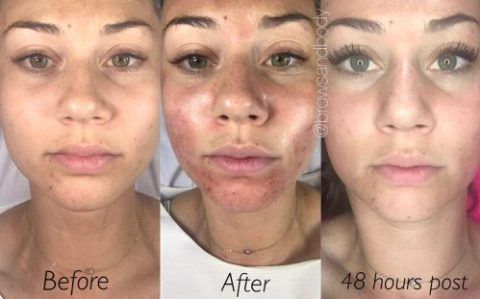

Is Microneedling Safe?
Microneedling is one of the safest penetrative skin treatments in existence. There are risks, but they are relatively easy to manage with care and precision.
The biggest risk to microneedling is cross contamination. In the aforementioned section we described what might happen should anyone attempt to needle over active acne. Similar to this, using a microneedle that has not been properly sterilized can cause adverse reactions to the skin and spread infection into the stratum corneum.
Microneedles are also prone to rust over time. Neglecting to identify rust before using the needle in a treatment can pose cellular damage and infection to the individual in question. This is easy to avoid with proper attention.
There are some parts of the skin, particularly on the face, where caution needs to be taken in choosing the correct needle length. Microneedling is only safe when the correct needle is being used in the correct area.
The skin around the eyes is a common area where patients seek microneedling due to the wrinkles that tend to live here. The closer we get to the eye itself, the thinner this skin becomes. Short needles need to be used to target this area, as the 2.5mm needles have the ability to puncture right though this thin skin and into the eyeball itself.
Likewise, a lot of people seek microneedling for scars and pigmentation on the lips. Though supple and thick, lip skin is extremely delicate and should not be needled with anything longer than 0.75mm.
Microneedling Cost

The cost of microneedling can vary depending on the number of treatments required, the size of the designated treatment area, and the practitioner in question.
By now, most estheticians have an itemized list of treatment options with correlating costs for clients to choose from. A lot of treatment centers offer packaged deals whereby a client can get a discount if they are opting for a face, neck and decollate treatment. There may also be further discounted rates for individuals who are only having small areas needled, such as the nose.
On average, one should expect to pay between $100 to $700 per session, the latter being for more extreme needling on vaster areas of the skin. Book a consultation with your esthetician where you can discuss your microneedling options, progress plans and budgets.
There are some types of microneedling that can be performed at home by oneself. This is called derma rolling, and is a more affordable alternative to seeing an actual practitioner in person.
Opting to microneedle yourself at home comes with all of the risks noted in the aforementioned section. You will become responsible for overseeing not only the needling itself, but also all hygiene surrounding the procedure.
Does Microneedling Hurt?
It depends on who you ask. You see, needling into the skin is such an uncommon sensation that most people have no preexisting threshold to which to compare it when it eventually happens; this is much like the experience of having one’s first tattoo.
It’s important to remember that the needles aren’t very long; even the longest of them all is still a fraction of what a regular sewing needle measures in at. There are mixed emotions from people as they sit though their first microneedling session; some find it almost ticklish, some find it slightly uncomfortable, and some find it totally unbearable.
Most microneedling practitioners will apply numbing cream to the treatment area about 45 minutes before commencing the needling. You are unlikely to feel much once this cream has been applied, and you might feel mild discomfort about an hour later when the numbness wears off.
A lot of people find that microneedling hurts less in areas where there is a higher fat ratio. Really thin skin, such as skin on the neck and collar bones, can be a lot more painful to needle and might feel like one is close to touching bone (although this is not possible).
After a microneedling session, one is likely to experience slight swelling and redness with a pain factor on par with a mild sunburn. This sensation generally wears off within the first 24 hours.
Different Types of Microneedling
The act of creating holes in the skin opens up many doorways for different treatments to take place. Just like when treating hair loss with microneedling, we can also insert different serums or tonics into the skin of the face and body following a microneedling session.
In addition to this, the derma-healing industry has never stopped exploring ways to improve on existing technologies, including ways to one up the treatments to make them even more effective than originally intended.
RF Microneedling (Microneedling with Radio Frequency)
RF microneedling is one of the most sophisticated improvements to have been made to the existing microneedling technology.
Instead of simply making holes and hoping for the best in terms of collagen production, these devices can actually transmit high intensity radio frequency energy into the cells and tissue once the skin has been broken into.
The frequency causes the cells to warm up, which stimulates a more effective and productive boost of collagen fibers, in turn leading to significant and noticeable improvement in the quality and texture of the skin.
The biggest positive when it comes to RF microneedling is that there is opportunity for more rapid results, meaning that less sessions are required. Those who might not have it in them to sit though microneedling for up to 6 sessions can opt for RF microneedling instead, as they are likely to achieve the same results in just 2 to 4 sessions.
One should avoid all alcohol and anti-inflammatory medication for up to 24 hours before an RF microneedling treatment. Failure to do so can lead to significant bruising post treatment.
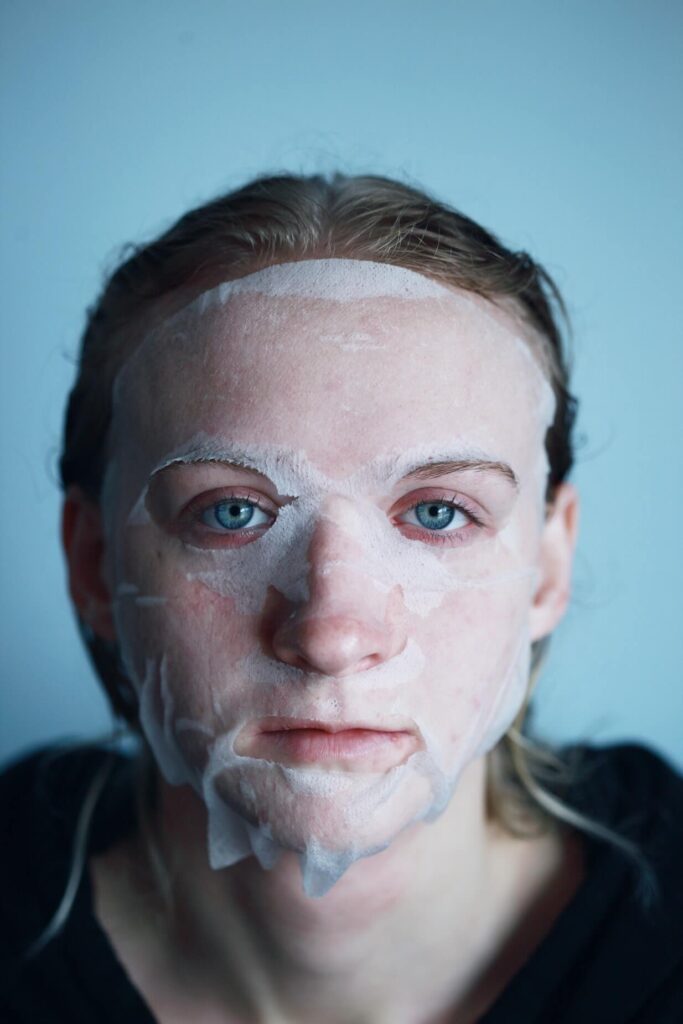
Vivace Microneedling
Vivace is quickly becoming the most sought after microneedling treatment in the industry. This is the latest, and greatest, radio frequency microneedling technology to have been released, and it is showing impressive results for all who have invested in a session or two.
Vivace is more than just the technology. The brand has dedicated the past decade to perfecting the microneedling experience from start to finish, with the most optimum results as their end goal.
What they’ve found is that microneedling is about more than just the needling itself. Optimum results come from thoughtful preparation before, during and after the procedure.
Vivace maintains that prior to RF microneedling a patient should be prepped with their breakthrough numbing treatment that actually relaxes the skin, creating a prime surface for the radio frequency microneedling to take place.
Immediately after the needling treatment, a practitioner should apply Vivace’s specially formulated serum that is full of naturally occurring amino acids. This gets the recovery going full speed ahead!
In the days following the microneedling treatment, Vivace recommends that their follow up masks be applied at home, for just 10 to 20 minutes.
When combined, these formulas and technologies have the ability to improve results and minimize downtime. Vivace believes that following this thought out, structured regime can save a lot of people from needing more invasive skin procedures further down the road.
Microneedling with PRP
Perhaps you’ve heard of a little something known as the “vampire facial”? PRP stands for platelet rich plasma, and it’s the reason why so many celebrities post selfies of themselves with their faces covered in blood…
Their blood, to be specific! The vampire facial is a version of microneedling that uses a patient’s own blood as the treatment serum.
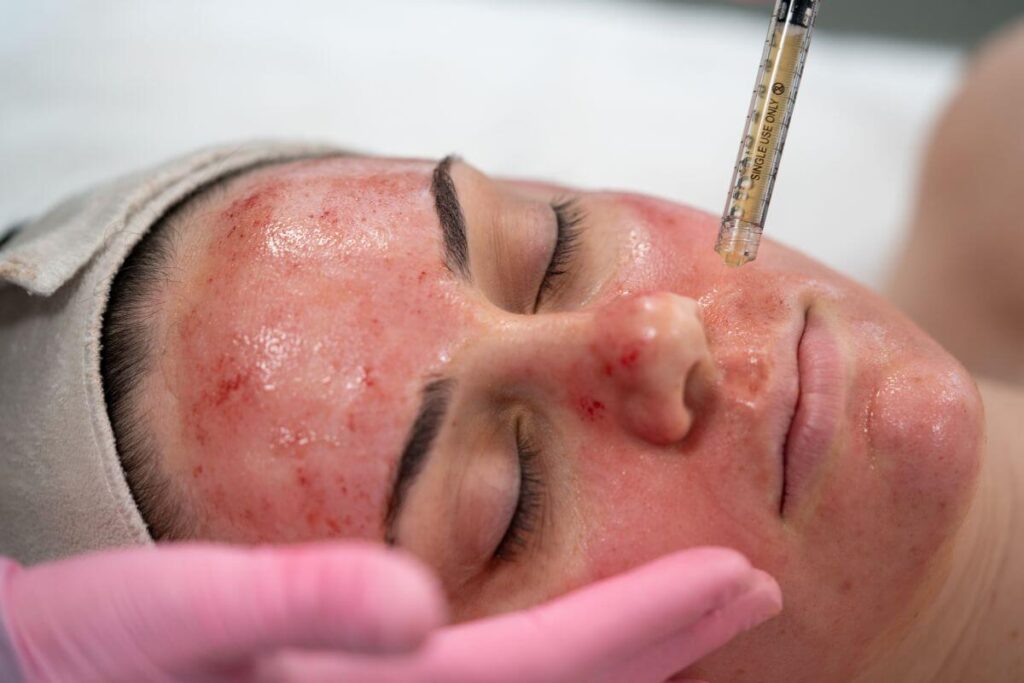
Prior to your microneedling session you will meet with a GP or nurse who can draw a small amount of blood from your arm. Some estheticians will be qualified in this procedure and can do it themselves on the day.
The blood drawn is then spun using a centrifuge, and the plasmas are separated. The platelet-rich plasmas contain concentrated nutrients with the ability to promote intense cellular healing, especially when the platelets match the DNA of the receiver.
One the skin has been microneedled, the practitioner will paint the rich-plasma over the area, allowing it to seep into the holes that were created.
The effect of platelet rich plasma on the skin is something that has shocked even the harshest critics. There is likely no more effective anti-aging treatment in existence than this one. Religious receivers of this treatment tend to have sessions once every three months, with some of them in their 40s looking physically no older than 25.
The downside of microneedling with PRP is that it can be very expensive. Receiving treatment on the face, neck and décolleté can amount to upward of $1,000 per session.
Microneedling Aftercare: What to Put on Skin After Microneedling?
Microneedling is a great treatment as it results in little to no downtime following the procedure and requires very basic aftercare.
Because you’ve created actual holes in your skin, there are a number of things you’ll need to avoid in the days, and even weeks, following the treatment. Sun exposure is a big one, and you’ll want to avoid sun tanning for at least two weeks while the cells have time to heal. Exposure to the sun will kill off all new cells, effectively rendering the procedure a waste of time and money.
If you have no way of staying out of the sun (perhaps your job requires excessive exposure), then cover up as much as you can. Wear a wide brimmed hat and modest clothing to ensure as little of the treated area as possible comes into contact with the UV rays. Be sure to apply sunscreen to the treated areas for 24 hours after the session.
In addition, anti-inflammatory medications should be avoided for up to a week after the microneedling procedure. Understand that your skin rejuvenation is happening through a natural inflammatory process that creates collagen. Taking anti-inflammatories will interfere with this process. One should also avoid anti-inflammatory creams such as arnica, and icing of the affected area is strongly discouraged.
Though unlikely, should one experience excessive pain or discomfort a gentle painkiller such as Tylenol is suitable after the procedure.
Microneedling at Home
It’s finally time to explore the most exciting branch of microneedling: the needling you can do to yourself — at home!
To make microneedling more accessible to the masses, developers created compact needling devices known as dermarollers that allow individuals to administer microneedling at their leisure. The machines that qualified estheticians use for microneedling offer advanced, sophisticated technology that is not practical to take into the home; a dermaroller is a far more effective solution.
Dermarollers are shaped like razors, but instead of blades on the end they feature a rolling pin made from hundreds of tiny needles. The device glides over the skin, poking holes into the surface as it goes.
As with regular microneedling, dermarollers feature a range of different needle depths starting at the basic 0.25mm up to the more intense 2.5mm. It is not recommended that anyone use a 2.5mm dermaroller on themselves, as there are risks involved, but nevertheless they remain freely available to all who wish to purchase them.
Best Microneedle Rollers and Dermarollers
The quality of your dermaroller will depend on your budget. One needs to be careful when purchasing cheap dermarollers as their design can sometimes do more harm than good. Instead of individual needles, cheaply made dermarollers are held together by spiked wheels that mimic the look of individual needles, when really they are more like a gear in a clock.
These “needles” start out thin, but get wider as they move closer to the center of the gear. You’ll be creating much bigger holes than intended for optimum collagen production, and, if you are not careful, this can even cause scarring over long term use.
Some great Dermarollers to look out for are:
ORA Gold Deluxe Microneedle Dermal Roller System
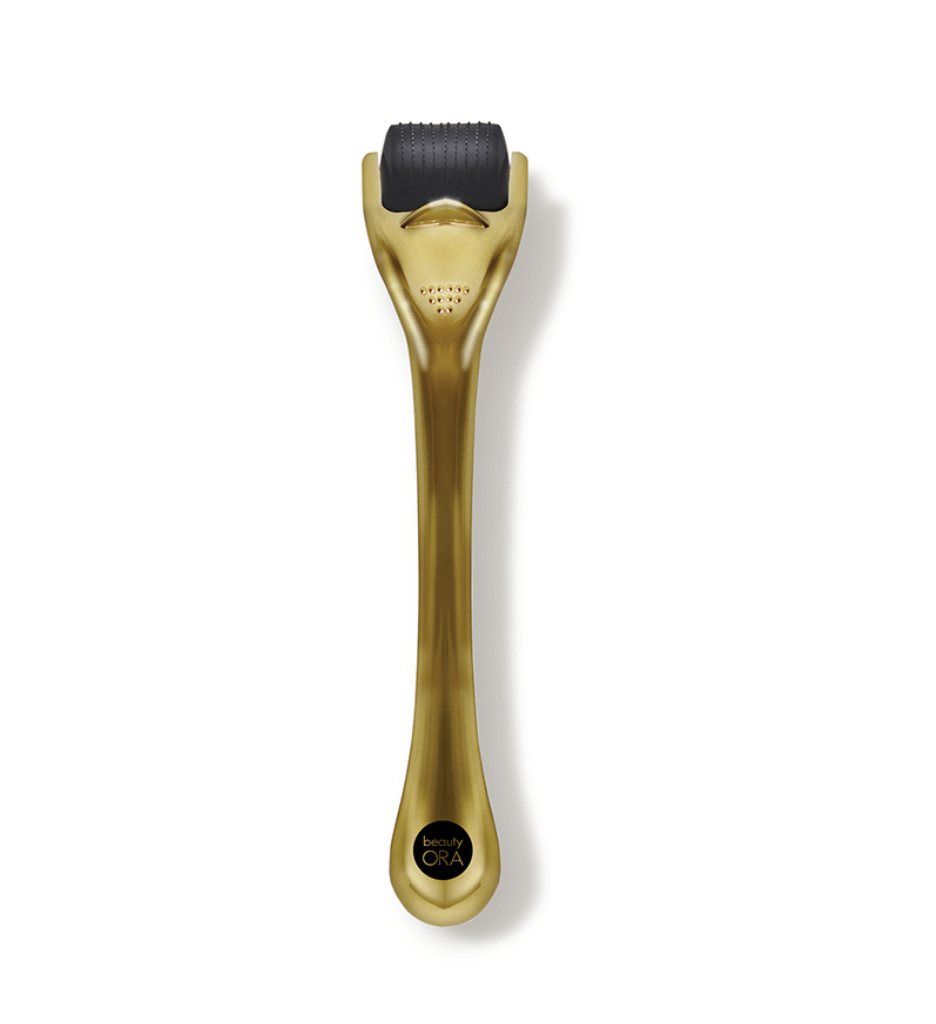
This is a wonderful tool for gradual, gentle improvement in the overall texture and shine of the skin. It features 0.25mm microneedles, which is the perfect length for safe, long term use at home.
Jenny Patinkin Rose on Rose Derma Roller

Ever heard of the wonders that come from jade rollers? This device by Jenny Patinkin is a two-in-one creation that features a dermaroller on one end and a rose quartz bulb on the other. As you roll the 0.2mm needles onto your skin, the rose quartz follows through with claimed healing properties and helps to reduce inflammation.
Environ Gold Roll CIT
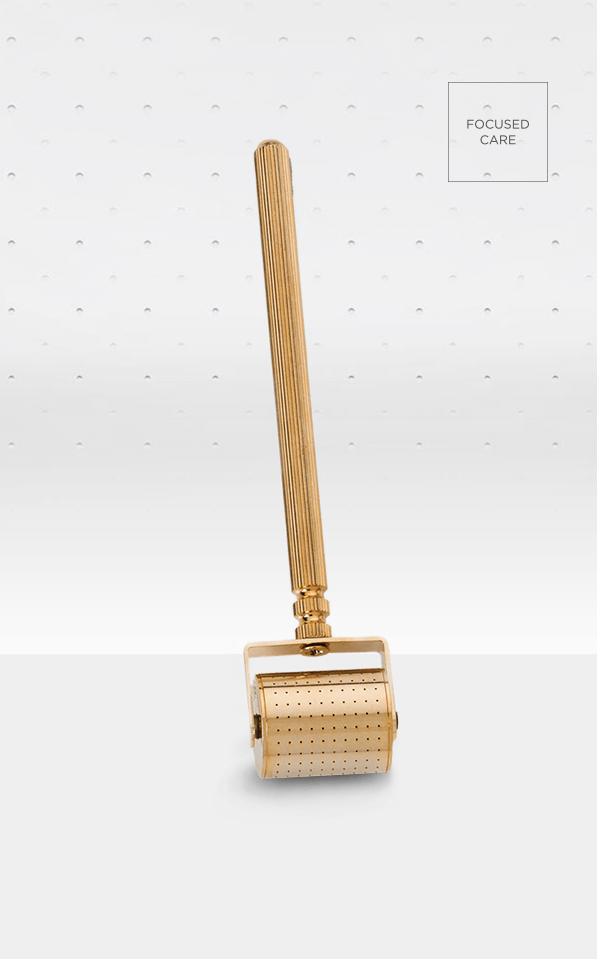
If you’re going to treat yourself, do it properly with the Environ Dermaroller that is plated in 14-karat gold. Gold is a natural antibacterial mineral, which helps keep the roller sterile for longer. It features 260 ultra fine needles that work on pigmentation, fine lines and scarring.
Linduray Skincare Cosmetic Microneedling Kit
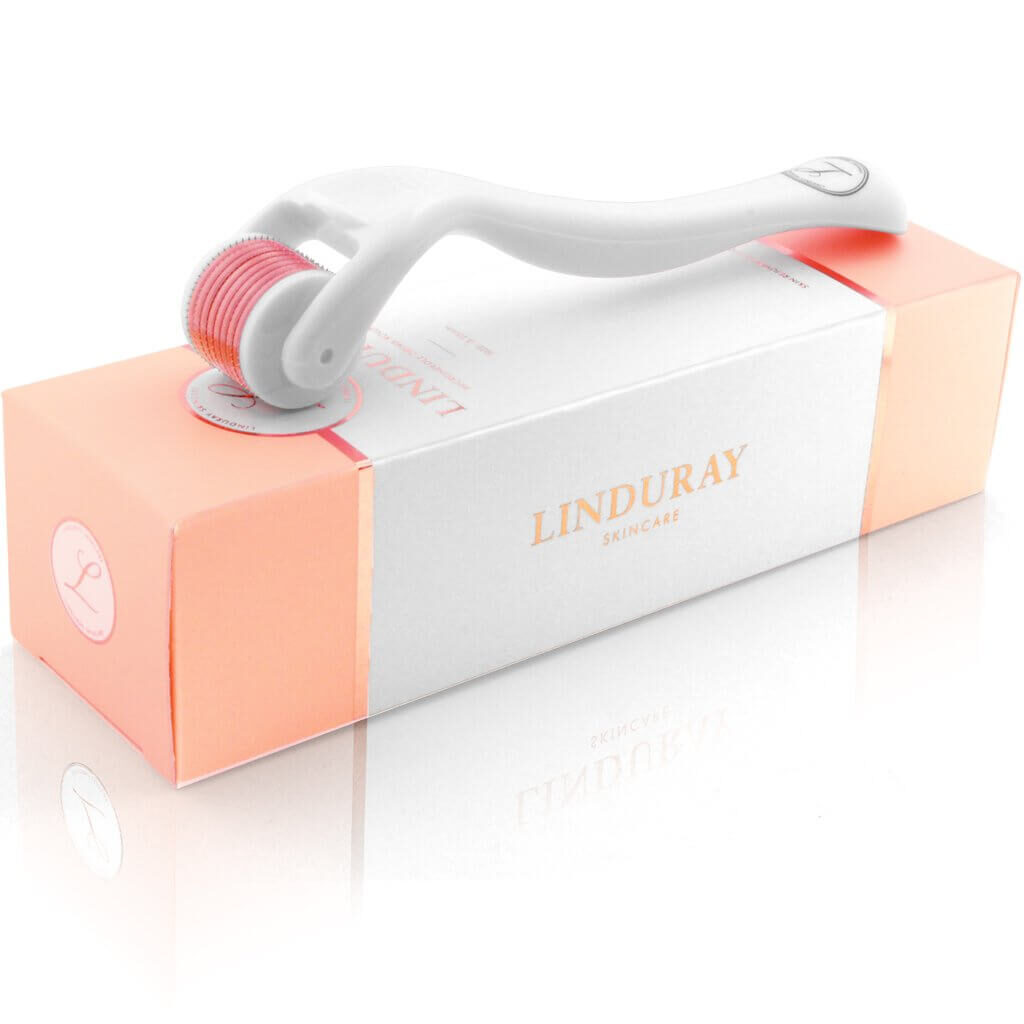
It’s unsurprising that people with sensitive skin are hesitant to adopt the practice of dermarolling at home. This device is widely renowned as the best dermaroller for sensitive skin, and it’s also wonderfully affordable!
Sdara Skincare Derma Roller

Sdara’s dermaroller has received much praise over its ability to transform sun damage in a short period of time. The roller is very gentle, coming in at just 0.25mm in depth, and it manages to penetrate acne scarring with ease.
Derma Roller Before and After
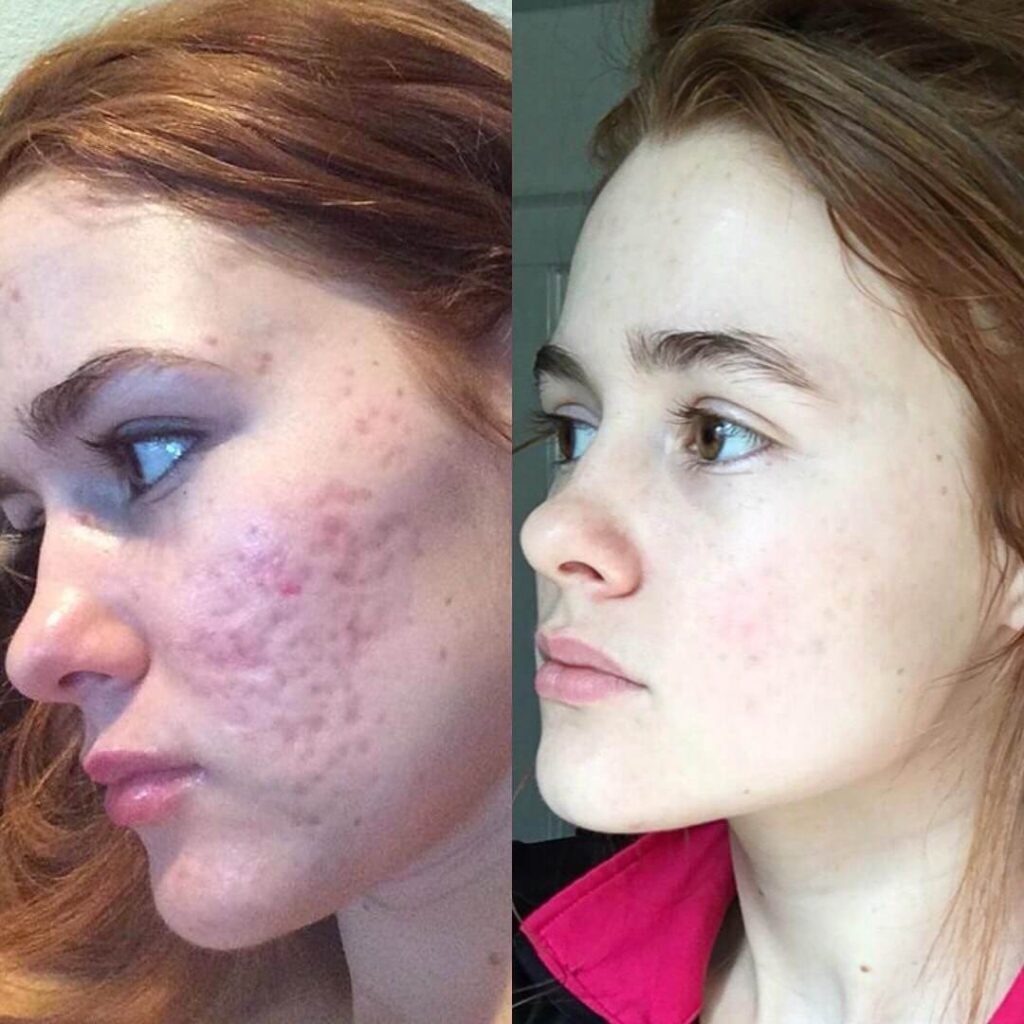


As with any microneedling treatment, it is recommended that one document their at home dermarolling journey from start to finish. This is the only way you’ll be able to monitor whether or not changes are taking place.
It is also recommended that one keeps a log of all the products being used in conjunction with the dermaroller. If you tend to apply a vitamin C serum after rolling, for example, then make a note of what it does to your skin, how your skin feels, if there appears to be any irritation etc.
How to Use Dermarollers
The first thing you need to do when dermarolling at home is to ensure that the roller in question has been properly sterilized. Some people like to use rubbing alcohol to clean the needles, but antibacterial soap and water will also suffice.
The most important thing to remember is that you need to clean the skin you are rolling over just as thoroughly as you clean the roller itself. Use rubbing alcohol or an antibacterial wipe to ensure the skin is free of all dirt, oils and makeup.
Now it’s time to roll. You might find it beneficial to use a YouTube tutorial on exactly how to roll for optimum results. Generally, you want to roll over each 10cm patch of skin 10 times back and forth vertically, and then 10 times horizontally.
When you’re done with your rolling session, you need to wash the dermaroller properly before storing it. Failure to do so can result in extensive bacterial growth and put your roller at risk of rusting, rendering it unusable come your second session.
Microneedling Pens
A microneedling pen, also known as a dermapen, is a more compact alternative for people who aren’t necessarily interested in rolling their entire face just to see results in a specific area.
Instead of holding a large amount of needles, these pens hold only a few needles at once, and can electronically thrust them into the skin while the user holds the device in place. These pens are great for targeting smaller treatment zones, such as fine lines around the eyes, laugh lines by the mouth, or slight pigmentation on the cheeks or brow.
How to Use Microneedling Pens
Since they are electronically powered, microneedling pens are in many ways much easier to use compared to dermarollers. The pens will do all the work; you just need to take responsibility for cleaning them and the skin, and for holding them up to the face.
Even though you’re not rolling the needles from one end of the face to the other, the pen’s needles are still going to touch every part of the surface area of the facial skin, giving opportunity for bacteria to be spread.
It is therefore essential that your facial skin is properly sanitized prior to needling, removing as many impurities as possible so that none get pushed deep into the pores during the experience. Since microneedling pens make use of disposable needle cartridges, with the result that the pens themselves don’t need to be sterilized before being used.
Like dermarolling, however, one should never use a microneedling pen over active acne. The pen will open up the pimples, pick up the bacteria and other harmful substances, and transfer it to the next location.
When using a microneedling pen, start with the more fleshy, plump areas of the face, like the cheeks and chin. Work your way across each, and then start on the regions where the skin is thinner. The forehead is usually much more delicate, and needling here might result in trace amounts of bleeding.
Finally, move through to areas such as the jawline, nose and brows. Expect bleeding here, too.
It is generally not encouraged that one use a microneedling pen on their own lips. Smoker’s lines above and below the lips can be treated with a microneedling pen, but the lips themselves are a risky area to needle at home.
Skin Pen
The SkinPen is renowned amongst avid microneedlers as the best microneedling pen. It was the first microneedling pen to be approved by the FDA for public use, and has been critically acclaimed for showing far more visible results compared to regular dermarolling.
The compact head of this microneedling pen allows it to access areas on that face that most bulky dermarollers cannot. This is why the Skin Pen is undeniably better at treating fine lines and wrinkles.
The cartridges of the Skin Pen are disposable, removing all risk of bacterial build up during storage time. There is little downtime after a session of Skin Pen, so the device is safe to use weekly.
Dr. Pen
Dr Pen is a close second, though the market is quickly becoming saturated by competitor brands.
This trusted name in microneedling pens has always tried to stay well ahead of the technology, being the first to design a pen that can, quite literally, needle into even the smallest crevices of the face.
Dr Pen is highly concerned with safety in the home. They saw too many individuals, particularly women, making use of dermarollers that were not the correct size for their needs and doing more damage than good. Their solution is their portable microneedling pen which aims to bring the benefits of microneedling into every home, without the risks.
Their pens come with disposable cartridges, meaning you can keep the body of the pen for a good few years whilst only replacing the needles themselves.
Best Microneedling Pen
Nurysh DEEP + UNIQ
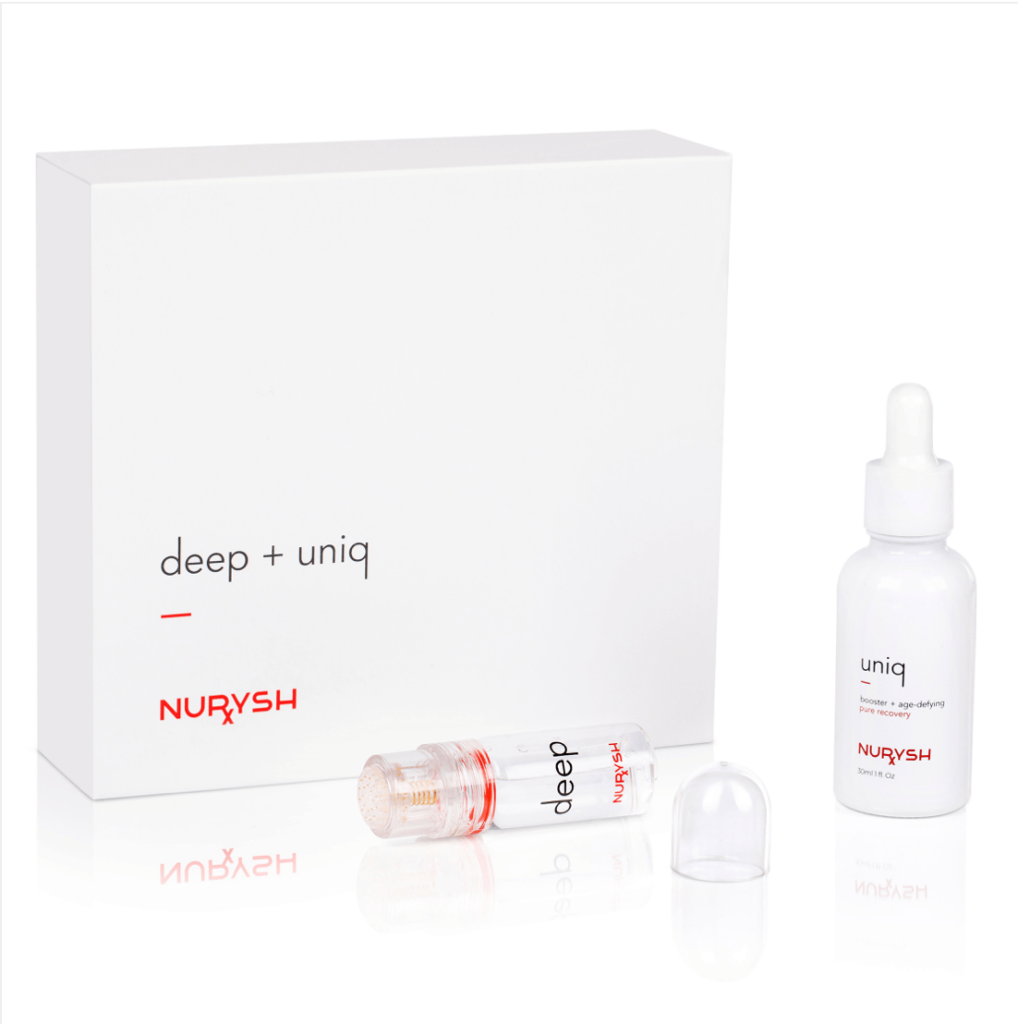
We love a brand that offers a unique, never-before-seen alternative to conventional technologies. Nurysh has brought us the wonders of electronic microneedling pens, only without the electricity.
This is a new kind of microneedling pen, but we trust we’ll be seeing a lot more like it in the near future. Instead of a formal needling device, this is simply a needle head that twists onto an empty cartridge that looks a bit like a lipstick tube. The cartridge can be filled with the active skincare product of your choosing, and in the process of running the ‘pen’ over your face, the needles create micro channels in the surface of the skin wherein the product can flow.
In the process, the user is getting all of the regular benefits that come with at home microneedling. Collagen is being stimulated, the quality of the skin is being improved, and the skin is receiving more nutrients that it would during regular product application.
If you’re not partial to using your own skincare product inside of the refillable cartridge, Nurysh has got you covered. The set comes with a serum made from vitamin C, hyaluronic acid and niacinamides; a potent combination of ingredients to aid in optimum microneedling results.
The head of the cartridge only needs to be replaced every 40 to 60 days, depending on frequency of use. Nurysh recommends use of the device twice weekly for optimum results.
Microneedling Near Me
If you’re interested in pursuing a microneedling regime, and feel it would be a beneficial addition to your skin journey, you likely won’t have to look very far to get things… rolling.
If your goal is to receive microneedling from a trained professional, as you are not confident in your ability to do it at home, then start by conducting a search for ‘microneedling near me’ and filter through the results that come up.
You’ll want to look out for a reputable practice that appears to specialize in skin aesthetics. A nail technician who is offering microneedling on the side, for example, is a clear red flag.
Once you find a qualified esthetician near you, make a consultation appointment. This gives you a chance to discuss your skin goals with the practitioner, and figure out if microneedling is something that can help you with your specific problems. This also gives you a chance to confirm that they are the real deal, and that your skin is in safe hands.
If you’re opting for the DIY microneedling experience, and feel that you are capable of performing the needling on yourself, then you likely won’t need to leave the house at all. The internet puts all home microneedling devices at our fingertips. You can have a dermaroller delivered to your door in no time at all by either purchasing directly from the brand you favor, or finding the equivalent on e-commerce sites such as Amazon or Ebay.
Again, take your time when purchasing a dermaroller to use at home. There are a lot of brands out there that are cutting corners and delivering less than sound products to people who simply don’t know any better. Remember: individual needles are imperative!
Microneedling Side Effects
Swelling, redness and inflammation are to be expected prior to any session of microneedling. There is no cause for alarm with these, unless they cease to ease up after 48 hours, in which case you are encouraged to let the practitioner in question know that you are having some trouble.
Pinpoint bleeding is also not a cause for alarm when it comes to microneedling. Many practitioners actually appreciate when the skin starts to excrete small amounts of blood; it means the treatment is working.
It is not abnormal to experience traces of blood still escaping the pores a few hours after a treatment, but if this is happening in excess you will need to let someone know.
Bruising is a potential side effect of microneedling and dermarolling, though very uncommon. Bruising tends to happen if a patient has taken anti-inflammatory medication prior to the treatment, which causes confusion in the skin when it attempts to naturally inflame.
Your daily moisturizing routine should commence as usual the day after your microneedling treatment. Some people might find their skin starts to peel 3 to 5 days following the procedure. This is rare, and shouldn’t happen if you’ve been moisturizing properly. Regardless, it is completely harmless and simply a result of dryness due to cellular turnover. Simply apply more moisturizer than usual and avoid picking at the flaking skin.
Did You Enjoy This Article?
If you enjoyed this article, you might also like our articles discussing beauty and skincare such as Mica in Makeup, 22 Best Natural Deodorant for Women, and Essential Oils for Skin.

